A Love Letter to Grenache
An ambitious exercise in comparing a grape variety to Elizabeth Taylor
I’ve loved Grenache for as long as I have loved wine.
But before I educated myself on wine, I didn’t realise that I loved Grenache and I suspect that is true of most people.
I often reached for Côtes du Rhône, I adored Rioja, and I knew that ‘Vieux Télégraphe’ was one of the most delicious wines I had ever tasted. I didn’t connect the dots to appreciate what these wines had in common.
Then, ironically, when I first learned about wine, I was embarrassed to say I loved it. WSET literature calls it ‘high yielding’ and prone to accumulating sugar. It hasn’t had the international success of Cabernet of Merlot, nor is it spoken about in whispers and with magical admiration like Pinot Noir. In fact, it’s not even had the profile of its bed-fellow Syrah. In the 20th century it was the second most widely planted grape in the world but by 2010 it had dropped down to 7th, largely thanks to the EU vine pull scheme and plenty of poorly made Grenache giving it a bad name – more on that later.
It wasn’t a fashionable grape to enjoy and perhaps it still isn’t. But, in brief, I hope to share why I think Grenache/Garnacha is so special and recommend a few favourites along the way.
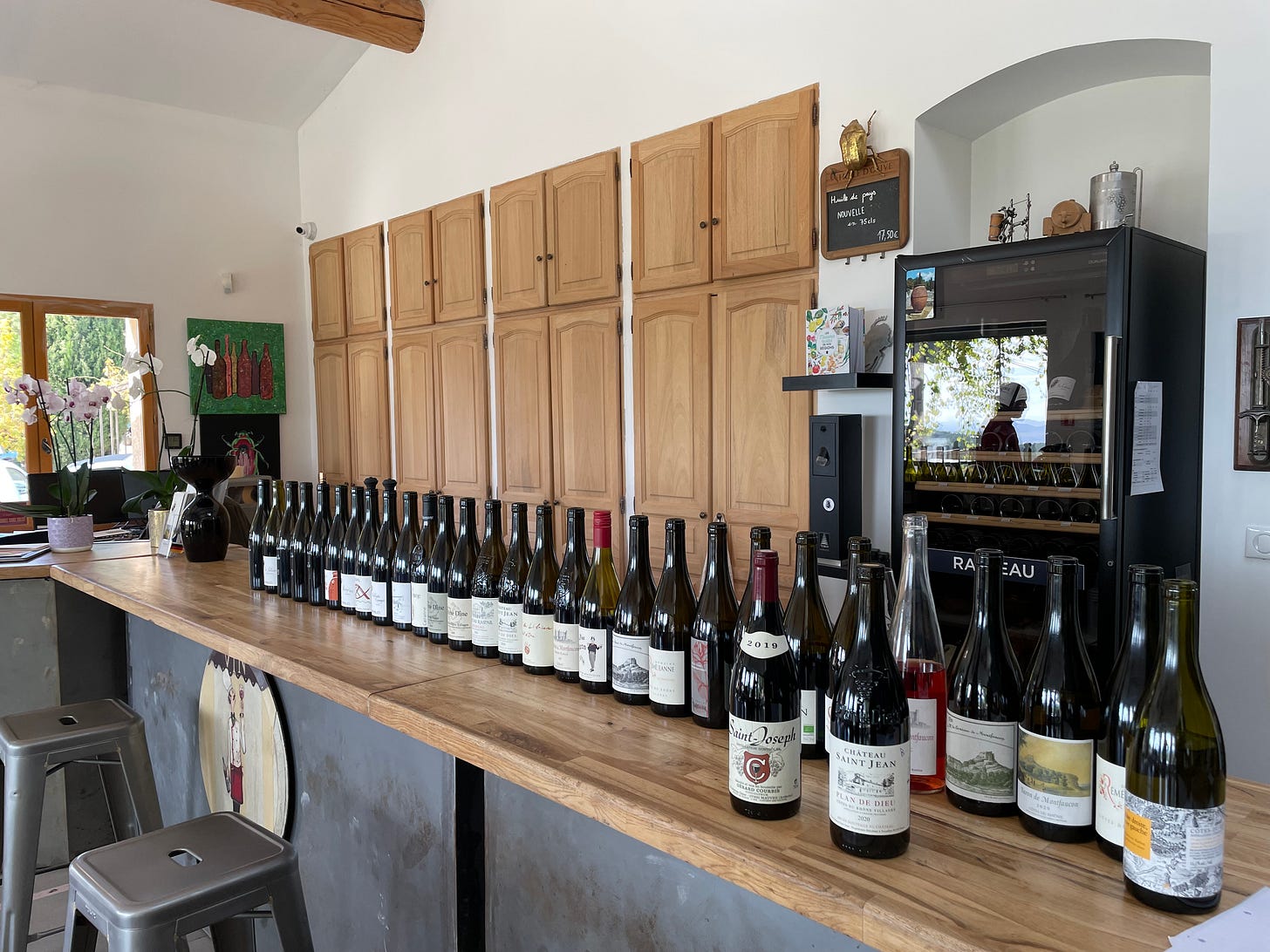
When Richard Burton famously wrote to Elizabeth Taylor in 1964, he said:
‘You don’t realise of course, E.B., how fascinatingly beautiful you have always been, and how strangely you have acquired an added and special and dangerous loveliness.’
I could have written something similar about my feelings for Grenache over the years.
Dangerous Loveliness – A Far Too Enjoyable Wine
On its loveliness, there can be no question. In the wines that I love that are blends – namely Rioja and the Southern Rhône – Grenache emboldens the fruity loveliness alongside blending partners of Tempranillo and Syrah that tend to bring the structure. Of course, without Grenache, both Tempranillo and Syrah do just fine, but that added dollop of red fruits, of warming spices, of soft round flesh and hint of herbs does neither any harm either. In winter months, that festive aroma and warming affability puts it top of my wine rack.
As I write this, I am sipping on one of my husband and I’s favourite ‘house wines’ – La Ponce, from Domaine des Escaravailles in Rasteau. A wonderful fruity and friendly wine, with backbone enough for food but entirely defined by its loveliness. (I do appreciate that being able to buy cellar door makes this an affordable Grenache-blend for me; likely around £20 in the UK but available at lots of independent shops such as Cambridge Wine Merchants as well as The Wine Society when they have stock.) Should you wish to try a wine from their range on the more affordable end, I can strongly recommend Sablieres.
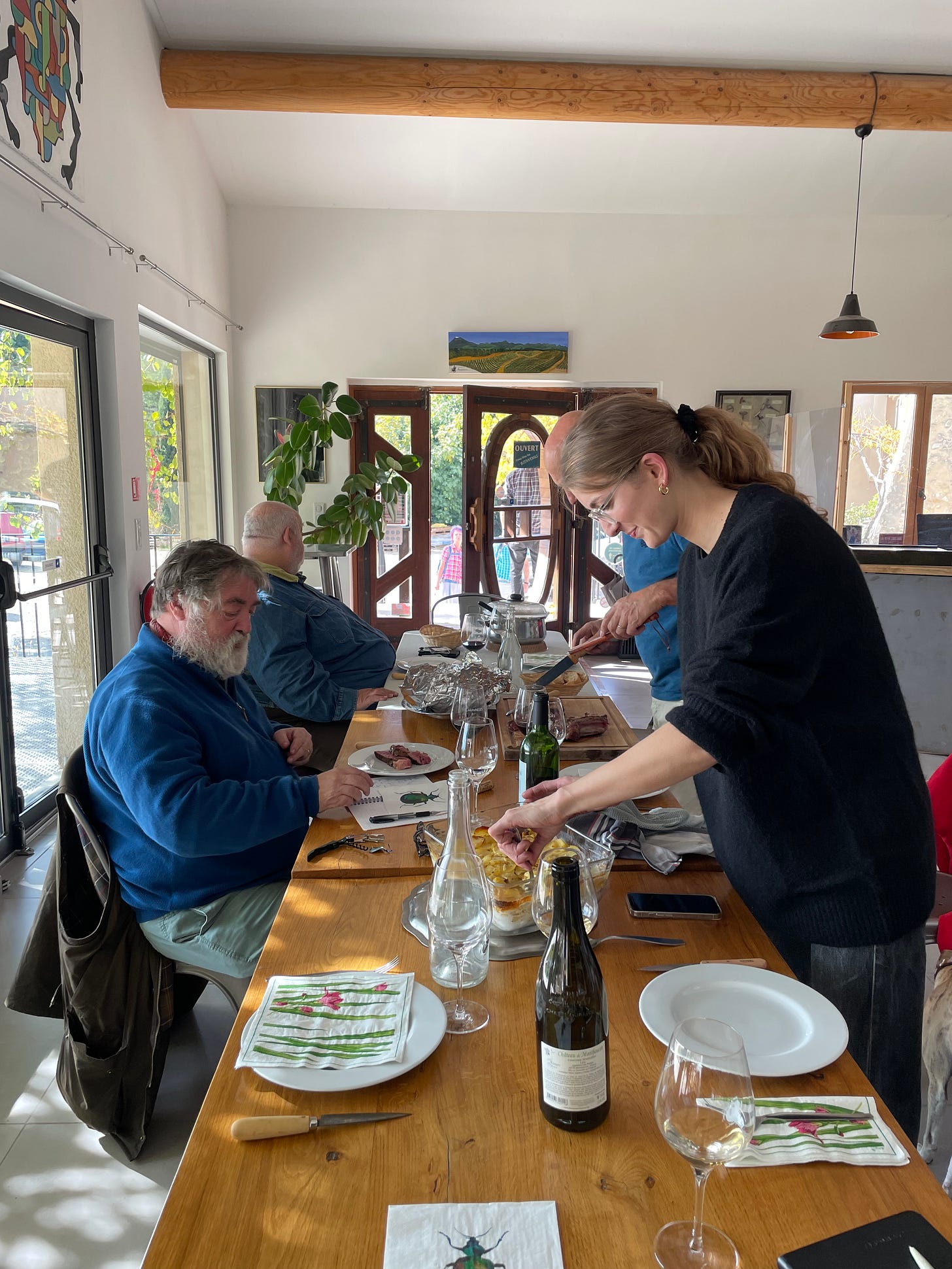
The dangerous loveliness, for me, is in its alcohol. As it ripens late, Grenache needs a warm enough climate and plenty of sunshine. The high sugar accumulation the textbooks rave about is true, and it’s not uncommon for the finest wines of Priorat or Southern Rhône to reach 16% ABV. Though, to my mind, the danger is not in that the wines themselves have high alcohol. It’s that the better made ones are so well balanced it can be hard to detect, and before you know it, you’ve drunk a bottle of 16% wine with a Wednesday evening beef stew. If that isn’t dangerous loveliness then I don’t know what is.
Acquiring Added and Special Loveliness – Trying New Styles
The idea of acquiring its added and special loveliness is less about the variety acquiring anything revolutionary – having been grown for centuries, the plethora of styles it produces are not necessarily new, but they have been honed and more easily accessible by the world. The sweet, vin doux naturels wines of Roussillon (e.g. Banyuls, Rivesaltes and Maury), the famous dark rosés of Tavel, the GSM (Grenache, Syrah, Mouvedre) blends of the Rhône and subsequently California, South Africa and Australia.
Nobody doubts its chameleonic ability to transform into a range of style – and it’s why I often suggest it as my desert island grape variety along with Chenin; you’d have the whole style range covered. (And all of this doesn’t even mention the fact that Grenache Gris and Grenache Blanc exist to bring us an even greater spectrum of possibility!)
But, a more modern notion of drinking outside the lines has given us opportunity to taste more unusual styles of Grenache, and my goodness that excites me.
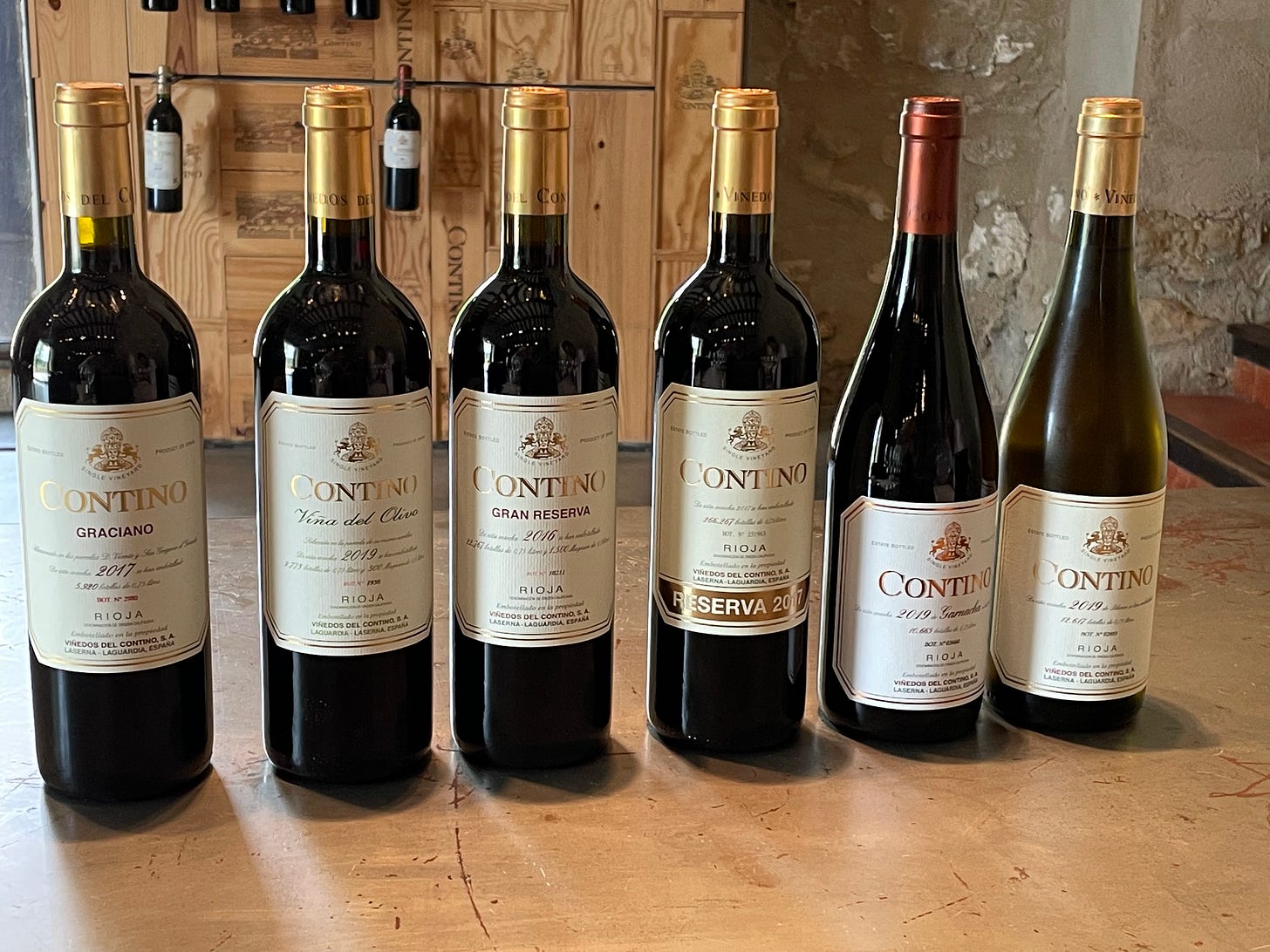
One such wine is Contino’s 100% Garnacha.
Having spent a morning at other bodegas being shown how carefully one must treat Garnacha, and how easily oxidised it becomes giving an undesirable brick red colour and overtly cooked aroma; I sat in a picturesque room at Contino and heard how they use wood at all stages of the production (not usually considered a friend to oxidative Grenache where concrete is more common) and yet produce a fresh, floral and altogether ethereal wine.
The ability of Grenache, when handled correctly (often with a winemaker that adores the variety as with the Contino), to produce these wines with lightness of touch is something that is only recently becoming more mainstream. It’s naturally paler colour, lighter tannins and fruit profile have meant that it is sometimes compared to Pinot Noir when made in the style – though its alcohol and acid are usually a giveaway. However, its drought tolerance and resistance to high temperatures (to really geek out, there are studies-a-plenty on this subject) mean that’s its certainly appearing more future-proofed than Pinot.
Could its added and special loveliness come down to climate change? Quite possibly…
Fascinating Beauty – Bush Vine
Now, lastly, onto how fascinatingly beautiful it is.
I can only think perhaps of one other variety, Zinfandel, where vineyards are so consistently beautiful in my mind. The strong wooden trunk of Grenache makes it an ideal variety to train in bush vines (AKA gobelet or en vaso) suited for the great mistral winds of the Rhône, or the arid windy vineyard expanse across Spain. What’s more, it’s also quite resistance to trunk disease and so, when tended carefully, can turn into the gnarled witches’ fingers of a 100-year-old masterpiece. My love of old vines is well documented, my love of old bush vines even more so.
Pockets of old vine Grenache can be found all over Europe (saved from the pull scheme) in famous regions, but also off-beat places like this beautiful varietal wine from Zaragoza. Fresh herbs and lashings of strawberry crunch.
But, where old vine Grenache is really thriving is the McLaren Vale in Australia – one of the only parts of the world where its beauty trumps its neighbours so unabashedly. Grenache is now the most expensive grape variety of the region (a relatively good indicator of quality and a great indicator of the market value of subsequent wines), selling for AU$4,000-5,000 a ton. That’s 4-5 times the price of Shiraz/Syrah in the region. And whilst Grenache only accounts for 6% of the plantings compared to Shiraz’s 50%, it’s the fruity beautiful stuff we’re after.
A great example is the Yangarra Old Vine Grenache from unirrigated vines planted in 1946. Wine making is meticulous – whole berries, wild yeasts and an array of aging vessels. It’s spicy and earthy but awash with dark berries too and has a tannin that holds softly but firmly in the mouth so as not to overpower the flavour but simply prolong the pleasure. If you see it, buy it. It’s usually available at Fareham Wine Cellar or Lay & Wheeler in the UK.
So whilst Elizabeth Taylor had an unarguable natural beauty that Richard Burton simply eternalised so eloquently in his letter; I think the beauty of Grenache is still relatively underserved. Whispers and confessions can be heard quietly in the trade, but I am proudly shouting.
“Grenache is beautiful, and I will continue to love it.”
Wines mentioned in the article:
Domaine du Vieux Télégraphe (here the 2017 vintage) - £58 from The Wine Society
La Ponce, from Domaine des Escaravailles in Rasteau - £22.99 from Cambridge Wine Merchants
Sablieres, also Domaine des Escaravailles - £10.95 from The Wine Society
Contino’s 100% Garnacha - £24.60 from Vinvm
Vinos Lopez la Bodegaza Garnacha Valdejalon - £16 from The Wine Society
Yangarra Old Vine Grenache - £31.50 from Fareham Wine Cellars




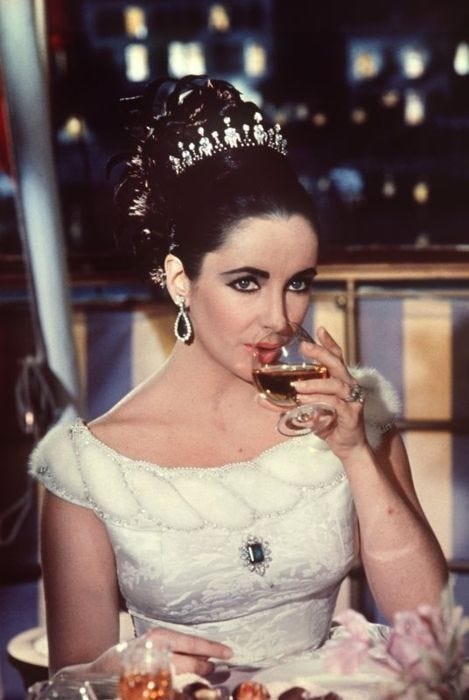
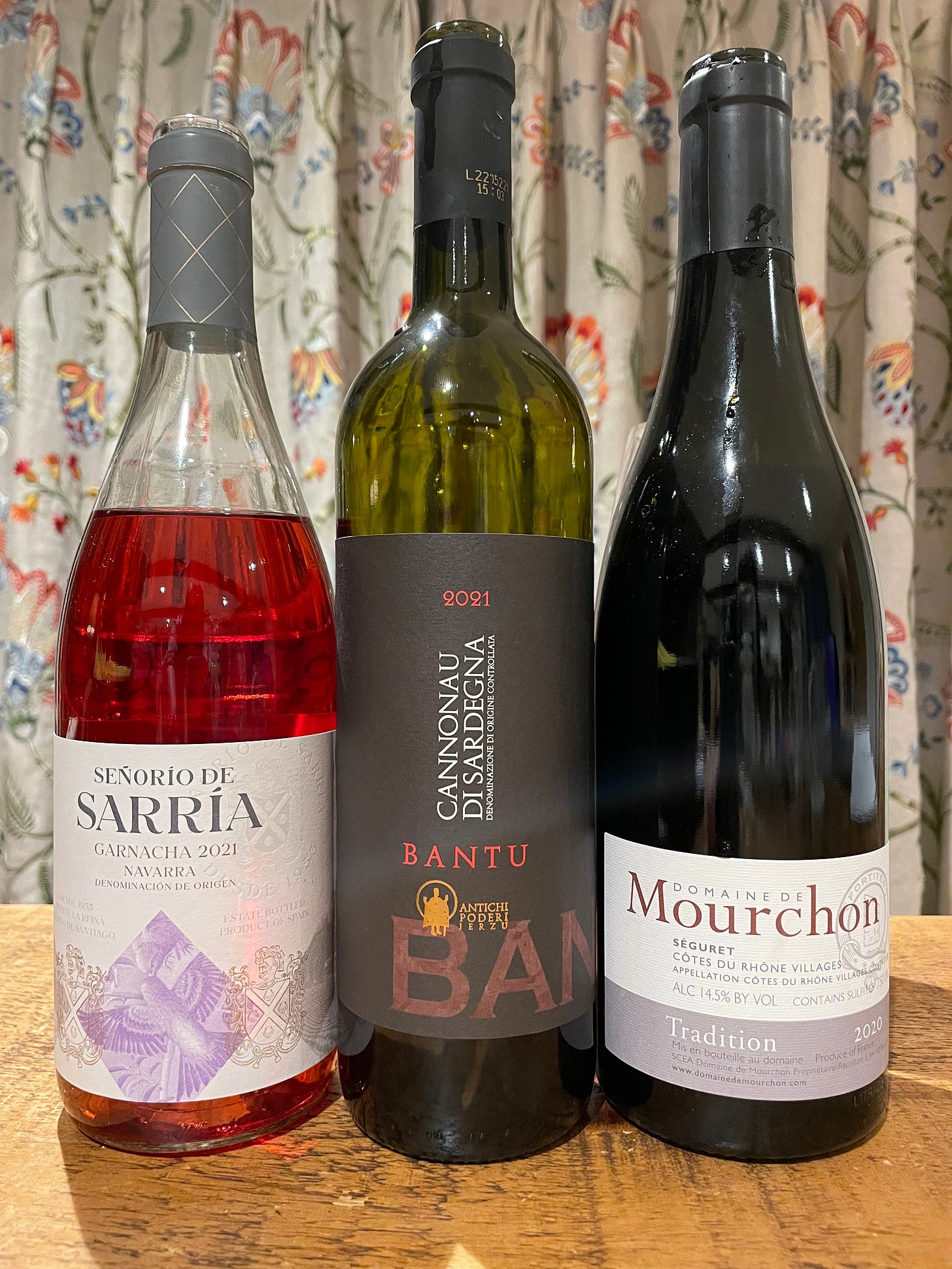
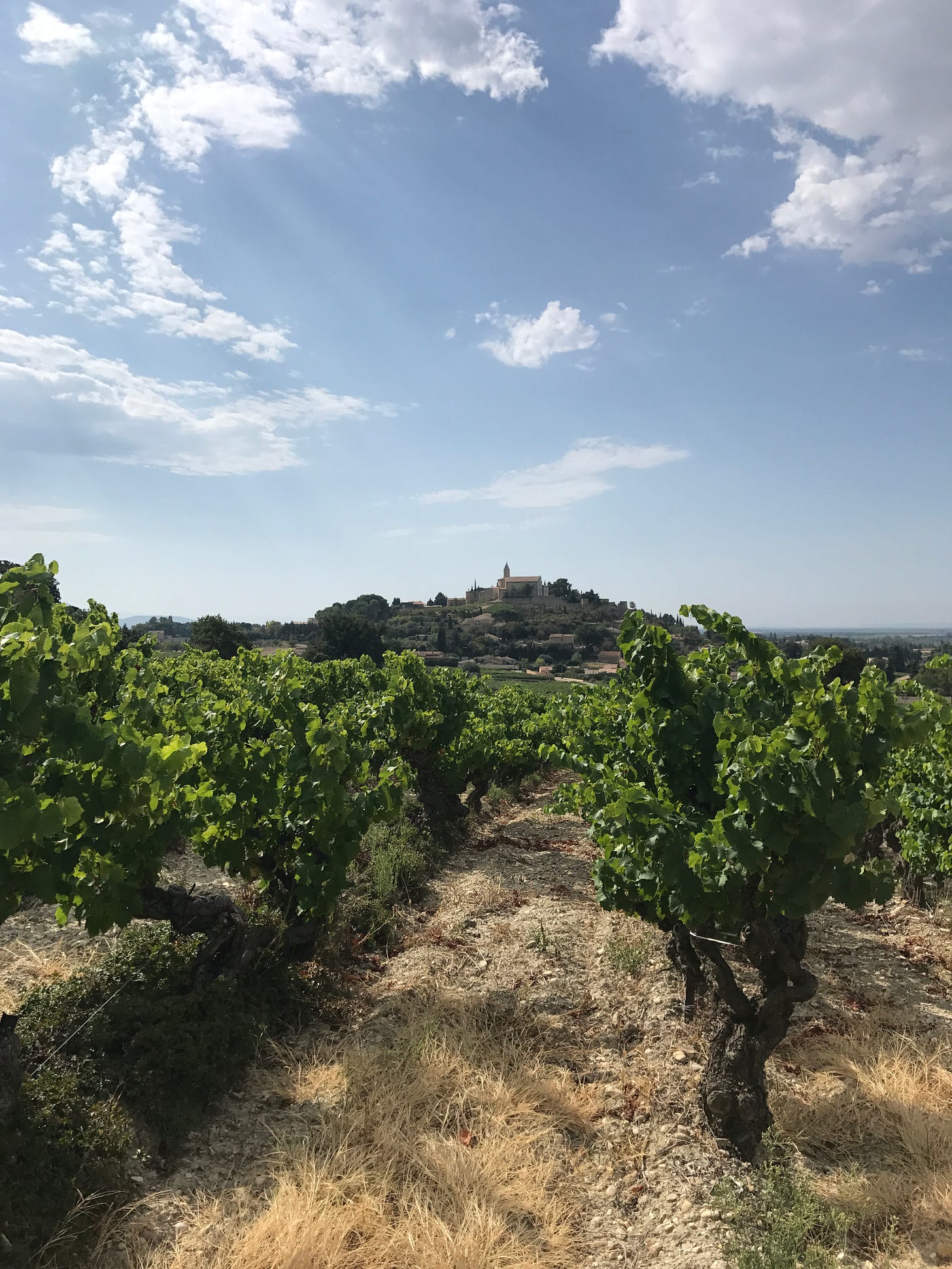
I've loved Grenache since my time working at CERN in Geneva in the 1970's when visiting the Rhone and Burgundy wine regions was straightforward. And also because I once won the bottle of champagne for identifying the "mystery wine" at a WSOC tasting as a Gigondas!
I adore Grenache - for all the wonderful reasons that you've mentioned. So, obviously, I adored reading your ode to this wonderful grape in its many forms and bottle shapes. My ex housemate (and always bestie) refused to drink wine...until we found a Blanc de Noir that we both loved. But he could never get on board with red wines...until Grenache (or, as he likes to call it, Ganache...we share a love of chocolate too). And this has become another reason to love the grape - it's ability to appeal to a wide audience.